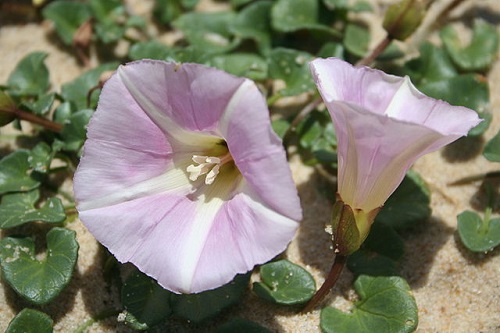Difference Between Vascular and Nonvascular Plants
Kingdom plantae is classified usually on the basis of two factors. The first one is Flowering, and the second one is Vasculature. Non-flowering plants are the Cryptogams (Thallophytes, Bryophytes and Pteridophytes) and the flowering plants are the Phanerogams (Gymnosperms and Angiosperms). Based on the latter factor, plants can be divided into Nonvascular and Vascular plants.
The plants that consist of separate tubular tissues like Xylem and Phloem to transport food, minerals, and water are called the vascular plants, and those that do not show this kind of differentiation of the tissue are called the nonvascular plants. Although their life cycles are divided between Gametophytic and Sporophytic generations, these two groups of plants are different in many ways. The following are some of the differences between vascular and nonvascular plants.
Habitat: Nonvascular plants require water to complete their life cycle and, hence, require moist, shady, and humid environments for survival. These plants cannot control the water content in their cells and tissues and also cannot live in a habitat that is scarce in water. However, as an adaptation to this deficiency, nonvascular plants are poikilohydric, i.e., they can withstand dehydration and can recover without any damage to their tissues.
Vascular plants, on the other hand, can survive in a wide variety of habitats and can control the water levels in their tissues (homoiohydry). Their capacity to tolerate desiccation is quite low when compared to their counterparts.
Life Cycle: While the diploid sporophyte is a dominant phase in the vascular plants, the haploid gametophytic phase is more prominent in the nonvascular plants.
Morphology: Vascular plants are tall plants. Presence of specialized lignified tissue for the transport of food (Phloem) and water (Xylem) facilitates their transport to a greater distance. However, the nonvascular plants are considerably small; the lack of vasculature makes the short length more favorable for their survival.
Anatomy: Division of labor is an important and more pronounced characteristic feature of the vascular plants. Arrangement of the vascular tissue in these plants is complex and sometimes characteristic to certain plant families. Nonvascular plants are a lot simpler in their cell arrangement.
- Leaves: Nonvascular plants do not have true leaves. The leaf-like photosynthetic structures are mere chlorophyll-containing, flat surfaces containing a single layer of cells. Food photosynthesised in these leaf-like structures is directly sent from one cell to another. This mechanism of transport isn’t competent enough to transport food to tissues far away. Vascular plants have a complex leaf structure. They are multi-layered and contain different kinds of cells with different functions. These are coated with a waxy layer called the cuticle, which prevents desiccation. Stomata in the epidermis (the outermost cell layer of leaves) control transpiration. Inside the chlorophyll-containing parenchyma, vascular tissue, which carries the synthesised food from the leaves to the other parts, is embedded.
- Stem: True stem is absent in non-vascular plants. On the other hand, stem among the vascular plants is multi-layered. The outermost layer helps in protection, exchange of gases, and sometimes in photosynthesis in younger plants. However, in woody plants, the outermost layer is bark, and most of it consists of non-living tissue. The layer beneath this is made up of parenchyma. The innermost tissue is the vascular tissue, which, along with facilitating food transport, provides skeletal support.
- Root: Roots in nonvascular plants are mere unicellular or multicellular filaments that anchor the plant body into the soil. The root system in vascular plants is as complex as the stem and more or less structurally similar to the stem.
Vascular tissue, also called the stele, shows different kinds of arrangements in roots and stems of these plants. Lower vascular plants have a protostele (types: haplostele, actinostele, plectostele), whereas the higher ones have a siphonostele (types: solenostele, dictyostele, and eustele). The latter shows the presence of parenchyma inside a layer of xylem, while presence of xylem as the innermost tissue is a characteristic feature of the protostele.
- Difference Between Vascular and Nonvascular Plants - December 25, 2015
- Difference Between Reptiles and Mammals - November 16, 2015
- Difference Between Gametophytes And Sporophytes - November 9, 2015
Search DifferenceBetween.net :
4 Comments
Leave a Response
References :
[0]https://www.youtube.com/watch?v=sV70ecVWoks
[1]http://sunrise.ite.gmu.edu/DOCS/LessonsByFellows/AWalkInTheWoods.pdf
[2]https://en.wikipedia.org/wiki/List_of_vascular_plants_of_Norfolk_Island


thanks for the information
Thanks for letting me
it is very nice information i like it
Thank you all for your best comments may Almighty God bless you in Jesus name Amen